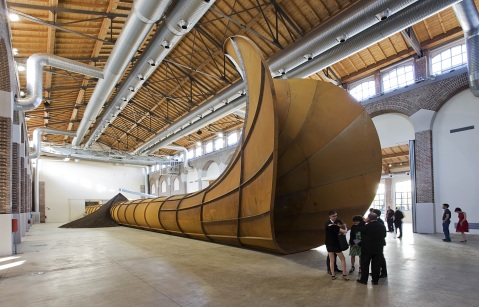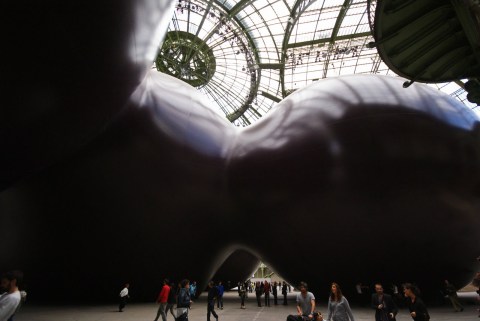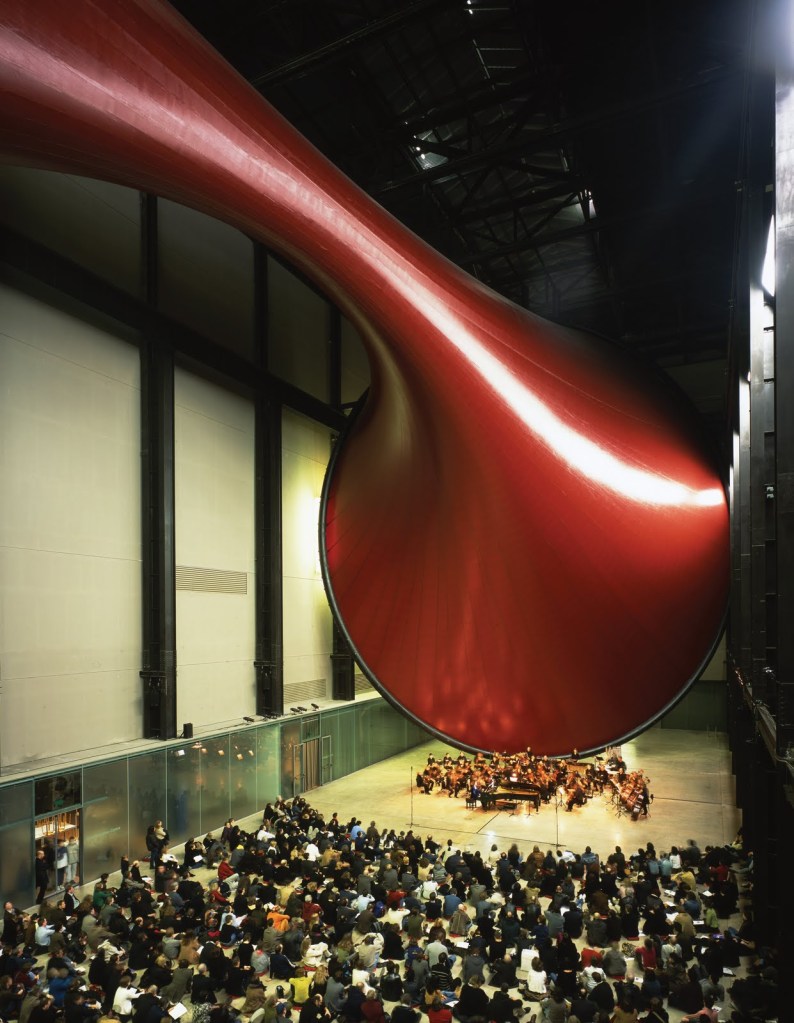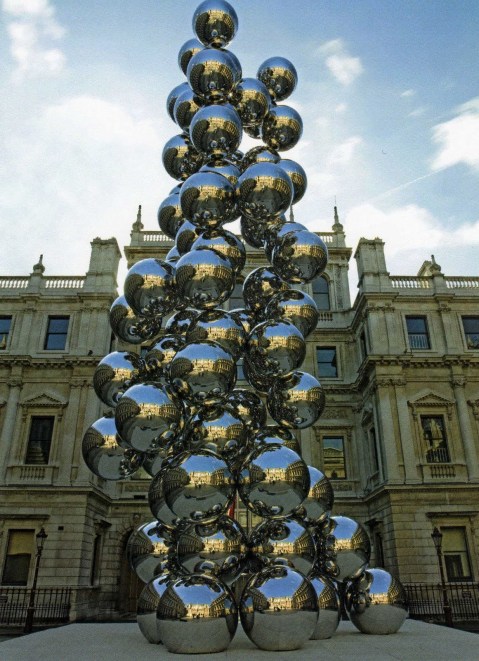Micro Architectures
2011/09/05 § Leave a comment
I’m quite interested in the interplay between product and architecture or how architecture as a custom one-off can be scaled down to create something that is at once a physical enclosure of space, and also a machine: Think automotive design as architecture, or architecture as a big piece of furniture, or architecture that can move, or architecture that can be bought as a produced object. These share a common thread in transferring technologies from one discipline to another in imaginative ways.
It obviously started out with the use of shipping container and industrial flotsam, most notably by the likes of LOTEK. But the evolution of the small-scale built product of architecture has evolved in a sophisticated manner though the work of Richard Horden and Didier Faustino. These are deliberate acknowledgements of building architectural product, rather than an issue of recycle-ability. The themes these guys choose to study are important in bridging the gap between product design and architecture.
Horden’s micro-architectures bring the physical capture of space into the automotive or vehicular realm, with ideas such as aerodynamics and lightness, straight out of a transport design textbook.
Similarly in scale, but very differently in concept, Faustino’s plays on scale and the human relationship to space enclosure become what he calls mesarchitecture. These objects and environments are small-scale, but challenge us spatially, questioning what the body can do when it’s spatial awareness is enhanced or modified (through his objects.) He has taken the idea of architecture and distorted its boundaries to challenge our notions of the human body and its possible adaptations to environments and conditions.
Anish Kapoor and distorted perception
2011/08/20 § 1 Comment
I’ve fallen in love with this man’s work over the years. His sculptures reveal themselves as monoliths out of scale, out of this reality. The mirrored series, such as the famous bean at Millenium Park distort the people around them, distort the site in its gravitational pull. I see the Leviathan project as “super” balls of my childhood, growing within the Palais as if almost enough to escape, but forced to retreat a bit in its tension with its host space. I guess that’s the point – The fantastical as normal. It inspires me as an architect and as a thinker. I’ve posted my favorites here, so that I could look at them in one place for my own shits and giggles, but also hopefully for yours.
New York and Infrastructure
2011/08/13 § Leave a comment
Back again, seeking to make connections and project ideas into the debate about design thinking’s aggressive take over of the everyday. Presently, these ideas are taking shape in New York City, that outpost of America that isn’t really America, but another specimen that is North American in context, but purely global in nature. I can say, as anyone with half a brain can, that the nuances of operating within the day’s processes are unique and varied. This goes for any city’s energy, not just New York’s. I just happen to be here, participating in this vast experiment right now – The bullshit real estate deals, the star-chitecture, the constant media based branding exercises, the shameless self promotion, the proliferation of moneyed kids who have vast monetary support systems, the genuine drive to be wealthy and connected, the place where investment comes even during economic downturns.
The fascination with New York is with the grid, the skyscrapers, the shops – in essence, its physicality. Tourists flock to the city to see the Manhattan of lore, really. But what is emerging below the surface is a city whose “hard” infrastructure (roads, waterways, garbage dumps, etc. – more in a later post) is increasingly interacting with a different phenomenon, or soft infrastructure. This soft infrastructure is changing the way we as “users” of the city, interact with each other and with the city’s offerings. There are blogs devoted entirely to this very idea. There are the never-ending applications – yelps and groupons and foursquares. I don’t need to waste anyone’s time describing how one can interact in any of these fora. What i do want to do, however, is waste your time talking about connecting the two infrastructures. What if we took the boring-ness out of hard infrastructure, and combined it with a little bit of soft infrastructure? Could we find hybrids that scale down our notions of infrastructure into micro objects that fulfill functions within the city’s daily operations, while aiding us in our interactive use of the soft?
For example: I’ve posted about food and locavore-ism, everyone is thinking about where their food comes from, and there are even blogs entirely devoted to food-ism as a design process.
We talk about all this on the supply side, before we eat. We do not, however, talk about where that food goes when we’re finished, or how the food goes into the waste stream. Sure, we can compost at home. But what about when out and about in the city? Food trucks get frequented (and of course they should) by people interested in the above. And more often than not, the packaging of said food trucks goes directly into garbage cans, which in New York City, can become incredibly disgusting in the warmer months. After that, the garbage cans get piled into garbage trucks, which truck them to service points (garbage juice flowing all over the streets,) which transport them yet again to landfills.
That’s a long process of hard-infrastructure related transport, contributing greatly to the infamous smell of New York.
Now, what if we thought about combining the frond end of food (eating, enjoying, being safe in the understanding that we know where our food comes from,) with the rear end of food. We could, say, design and build micro incinerators that capture gases from high temperature burning of trash and convert them to energy to power our food trucks around a given plaza in a neighborhood scale. We could plug these into soft infrastructure networks, distributing the energy as needed. Sure, there are a ton of logistical concerns for such an endeavor, but putting the process directly in front of people could educate through the thoughtful engagement of food processes from start to finish. Think about it for a second and comment even if you think I’m a total fool. I’ll be posting a lot more on this topic.
The contribution of food to Urban Space
2010/11/19 § Leave a comment
 There is nothing new about food carts. From their inception in New York as purveyors of fresh oysters, to the hot dog and pretzel vendor, to the halal cart, to the now ubiquitous food truck, these food stands turn ordinary sidewalks into temporary urban places and greatly add to the street life in given locales.
There is nothing new about food carts. From their inception in New York as purveyors of fresh oysters, to the hot dog and pretzel vendor, to the halal cart, to the now ubiquitous food truck, these food stands turn ordinary sidewalks into temporary urban places and greatly add to the street life in given locales.
Continuing the evolution, social media and SMS have entered the fray, helping to create pop-up restaurants, sidewalk cafes and the like. It’s cool to fantasize about how food and social media can transform our streets on a daily basis. Our public space will no longer need to be static. It can change and adapt to weather conditions, to people’s habits, and to eating trends.
Pop Up City blog
2010/11/18 § Leave a comment
I have to put a plug in for this blog. It’s a collection of creative writings on creative endeavors within cities worldwide. It’s quite wonderful.
When we think of it, cities are places where anything goes, where developers try to maximize profits, fighting preservationists the whole way (see image above;) where public space is adjusted and shaped anywhere at anytime because of the sheer number of people on foot or on bikes. More and more, we’re finding that the real fun in our cities are those informal objects, gatherings, and facilities which this website explores.
One Pot
2010/11/15 § Leave a comment
 I’ve been following (and yearning to join in on) the One Pot folks for some time. It’s such a simple yet profound idea, and one that should strike a chord with us all as Thanksgiving approaches. “These Table-based travels are at the core of a hunch I’ve had for fifteen years…That hunch – is that The Table – the place where we come together and share food – is one of the most important cultural sites in the modern world…And the second part of the hunch – the common table is in a state of peril…”We don’t eat together anymore. “”
I’ve been following (and yearning to join in on) the One Pot folks for some time. It’s such a simple yet profound idea, and one that should strike a chord with us all as Thanksgiving approaches. “These Table-based travels are at the core of a hunch I’ve had for fifteen years…That hunch – is that The Table – the place where we come together and share food – is one of the most important cultural sites in the modern world…And the second part of the hunch – the common table is in a state of peril…”We don’t eat together anymore. “”
I think we could learn a lot by thinking about our table, who we sit down with, where we sit down. These simple thoughts seem to dissipate as it seems Americans typically think about the holiday as an object vs. thinking about it as an experience to be shared with those interesting folks who surround us.
A rant on the economy and creativity
2010/11/08 § Leave a comment
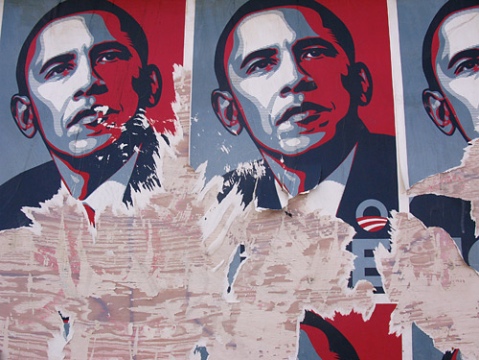 It’s been in the news a lot lately: The dreaded economy. It’s been a rough go the past two years working within fields that partake in building our environments.
It’s been in the news a lot lately: The dreaded economy. It’s been a rough go the past two years working within fields that partake in building our environments.
As the high-end of the economy begins to show momentum due to large corporate maneuvering overseas, the ever-expanding gap between the high and middle classes, and wall street bailouts, local economies continue to suffer. My interest in this lies in the historical connection between good ideas and economic strife. Arte povera, for example flourished when, “Artists began attacking the values of established institutions of government, industry, and culture, and even questioning whether art as the private expression of the individual still had an ethical reason to exist.” Russian Constructivism began in a down-turn with aspirations towards moving on from art for its own sake and instead sought to practice with social purposes. In contemporary life, The Rural Studio of Auburn University has shown us what collectivity and creativity can accomplish with little money to help fund it.
 Realizing that the above are major movements, it can’t hurt to think about different forms of architecture and design-related endeavors that could flourish in the shit-mess of a country we’re living in right now. It can’t hurt to position the cultural creatives as decision makers and problem solvers, able to help out the middle class that just kicked the democrats’ ass.
Realizing that the above are major movements, it can’t hurt to think about different forms of architecture and design-related endeavors that could flourish in the shit-mess of a country we’re living in right now. It can’t hurt to position the cultural creatives as decision makers and problem solvers, able to help out the middle class that just kicked the democrats’ ass.
1. The real estate industry is down, so why not team public and private interests together to utilize vacant lots and street fronts? An owner of a particular infill lot, while not having any chance in hell to sell in the economic climate, goes into a partnership with a design collective. That design collective gets a city grant to pay for a foundation to be constructed in the lot, to be used down the line. In the meantime, a public space, or market, or garden, or plaza emerges in the short-term. Perhaps ephemeral food vendors could set up shop, all with the charge that there is money to inject in to the locale while the economy-at-large heals.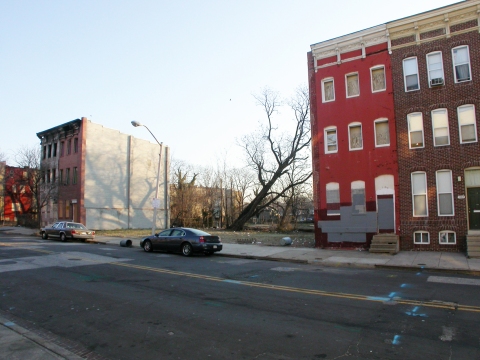
2. Recycling. What happened to the shipping container craze of the last decade? It seems like now is as good as time as any to develop ideas that take into account the recycling of trade-related or consumer-driven flotsam. It’s strange how there were so many ideas floating around when the economy was roaring, and little to none now that the economy sucks. We need to think about micro-architecture, the small-scale, ephemeral, “biological” component of the built environment that changes constantly, and how it relates to markets, economies, and its slow-moving, more permanent “geological” cities.. Perhaps we could make bike towers out of shipping containers or cement mixers, or perhaps we could create small-scale water collection parasites out of old fuel tanks.
3. Get out of the city. With all the this-that-and-the-other of branded and marketed consumer driven city living, we’ve lost a little touch with the edge. Suburbs are hell, we all know that, so why haven’t we seen more Rural studios in suburbia? The Suburban or Exurban studio, practicing how to increase density, how to get around without cars, or how to change our notion of extended families?
4. Towns. There are a lot of wonderful little towns in this country. What with telecommuting, we can live anywhere. Look at the real estate. I can guarantee you’ll get a killer deal on a beautiful little century old house for a fraction of the price in the city you live in. We need to reinvest in those towns, find something they’re good at, and foster it locally. Grow community colleges, run for office. If indeed everyone is moving to the city, why the hell not move to a wonderful, self sustaining town with proximity to the city? Have a great quality of life, telecommute, and organize locally.
Designing the local food movement
2010/11/07 § Leave a comment
A lot has been written about the benefits of living close to food production, and a lot of people have landed on the locavore band wagon. But less has been discussed about the connections between urban design as it relates to food production on a large-scale.
From Design Observer:
” …To date the enthusiasm for slow and local food has been based, on the one hand, on the assumption that abandoned or underused brownfield sites could be remediated for their productive potential; and on the other it has been based on the trend toward conserving greenfield sites on city peripheries — on dedicating valuable ecological zones to food production and to limiting suburban sprawl. But these laudable goals are not much concerned with how urban farming might affect urban form…”
I think that last sentence says a lot about the decisions made by the urban public. Yes, there is a demand for locally sourced restaurants in our cities today, but how come that has yet to translate to policy on the city level? Why haven’t we seen more locavore-influenced planning practices, those that would give special use permits to owners of vacant lots to lease to small-scale community farms in the short-term, allowing for properties to be used while real estate values slowly appreciate towards their longer term values? Not saying these sorts of ideas haven’t been done before, because they have. it’s just that they are too much on the down low.
Value
2010/03/22 § Leave a comment
 A post written in Mammoth has had me thinking about architectural value, and how this value holds little to no weight in our suburbs. With their brief in Magazine on Urbanism called The Shelter Category, we are treated to an analysis of housing culture through the eyes of HGTV (probably the most influential design tool for suburbanites in this country, at least.) The shows on this channel treat our homes as wealth generators, with all value in any remodel or paint job being resale value. So when one goes to add something subjective to one’s place, one must first think of those inhabitants who will live in the space AFTER resale. There is no comfort value, no design value, only monetary value. Our homes as stock.
A post written in Mammoth has had me thinking about architectural value, and how this value holds little to no weight in our suburbs. With their brief in Magazine on Urbanism called The Shelter Category, we are treated to an analysis of housing culture through the eyes of HGTV (probably the most influential design tool for suburbanites in this country, at least.) The shows on this channel treat our homes as wealth generators, with all value in any remodel or paint job being resale value. So when one goes to add something subjective to one’s place, one must first think of those inhabitants who will live in the space AFTER resale. There is no comfort value, no design value, only monetary value. Our homes as stock.
Designing with Data
2010/02/04 § Leave a comment
I just ran into a post today in the New York Times opinion section by Allison Arieff giving thought to wonderful new ideas in data collection as an important avenue for design research. The subject is space, and how we might be able to use / re-use abandon places within cities, using ideas of networks to make the urban environment both healthier and more efficient. There are a number of great links in the post, especially one directed towards a research project conducted for the WPA 2.0 competition by nicholas demonchaux. Words cannot describe this amazing video called Local Code, so go there and check it out yourself.


